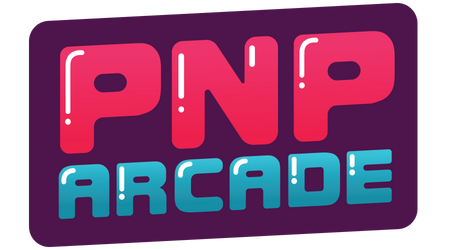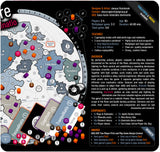The lunar Mare, plural Maria, are large, flat and dark basaltic plains of lower elevation on the Earth's Moon formed by ancient volcanic eruptions. The term Mare, which in Latin means ""sea"" was erroneously applied to such features by telescopic observers of the 17th century who mistook them for actual seas. In actuality, Maria are huge basins containing lava flows marked by craters, ridges, faults, straight and meandering valleys called rilles and are devoid of water. Maria are the largest topographic, dark and relatively young features on the Moon.
Together with the bright, heavily cratered and very old lunar Highlands (Latin: Terrae), they form the landscape of the Moon. Maria are less reflective than the Terrae and can be seen from Earth with the naked eye.
Back in the days, the Apollo program, led by NASA, brought back many samples of lunar rock and soil material. It proved that among other minerals and elements, Maria are to be rich in Iron, Titanium, Magnesium and Silicon. Even three new minerals were discovered on the Moon and named Armalcolite, Tranquillityite and Pyroxferroite. Since then, besides being a research object, the Moon becomes increasingly, a point of interest to many of Earth's public and private companies, which perceive it as their next source for acquiring and extracting resources in the future ...
In Luna Mare: Mineralis & Dominatio game, players compete in collecting elements discovered on the surface of the Moon with aim to discover additional, valuable, new resources and minerals. In addition to gathering resources they also fight for control over Maria to establish a rewarding Moon dominance.
Gameplay introduces and smoothly combines 2 core mechanics of pick up & deliver and area control in a single game. Together with light combat, score rivalry, units and cards management or team play, it provides a deep, tactical experience.
2 to 3 players may compete with each other in multiplayer games. Also, 4 players may play the game by being divided into 2 teams of 2 players. Playing cooperatively team members compete with the opposite team.
The game is based on a strong, realistic theme. Included map represents quite real boundaries of the lunar Maria seen from the Earth, as well as the Apollo landing positions. Also elements and minerals with their names, amount and composition are based on real discoveries, research and available publications.
TWO GAMES IN ONE
Luna Mare: Mineralis & Dominatio is a single board game that consists of 2 separate gameplay modes and experiences - Mineralis and Dominatio.
Although sharing the same goal concept, each gameplay mode offers different mechanics ratios and ways of playing the game, forcing players to adapt their skills and tactics. Mineralis focuses more on a pick up & deliver mechanics with a support of an area control. While Dominatio strongly prefers an area control with a complementary assistance of a pick up & deliver.
Besides using the same, basic gameplay mechanics and components, both modes also introduce their own, unique features. Mineralis has its element delivery and new resource discoveries. Dominatio, on the other hand, provides a constant fight for domination over the most valuable regions and elements.
Each mode comes with a dedicated map, rulebook and a few additional, individual components. They may be easily treated as a standalone, full-featured games.
---
2021 Two Player Print and Play Game Design Contest - achievements
BEST GAME: 1st place!
Best gamer's game: 1st place!
Best game to play remotely: 1st place!
Best mechanics: 1st place!
Best rule book: 5th place!
Best art/graphic design: 1st place!
Best use of theme: 1st place!
DETAILS
- Players: 2-4
- Ages: 10+
- Length: 40-90 minutes
CREDITS
- Publisher: Janusz Kuśnierek
- Designer: Janusz Kuśnierek
- Art: Janusz Kuśnierek
PNP DETAILS
- Page count: 24
- Components: All - 2 Maps, 52 cards, 131 tokens (print version), 10 tiles, 2 rulebooks
- Additional components needed: Opaque bag + see assembly.pdf file (Tokens & Tiles section)

















